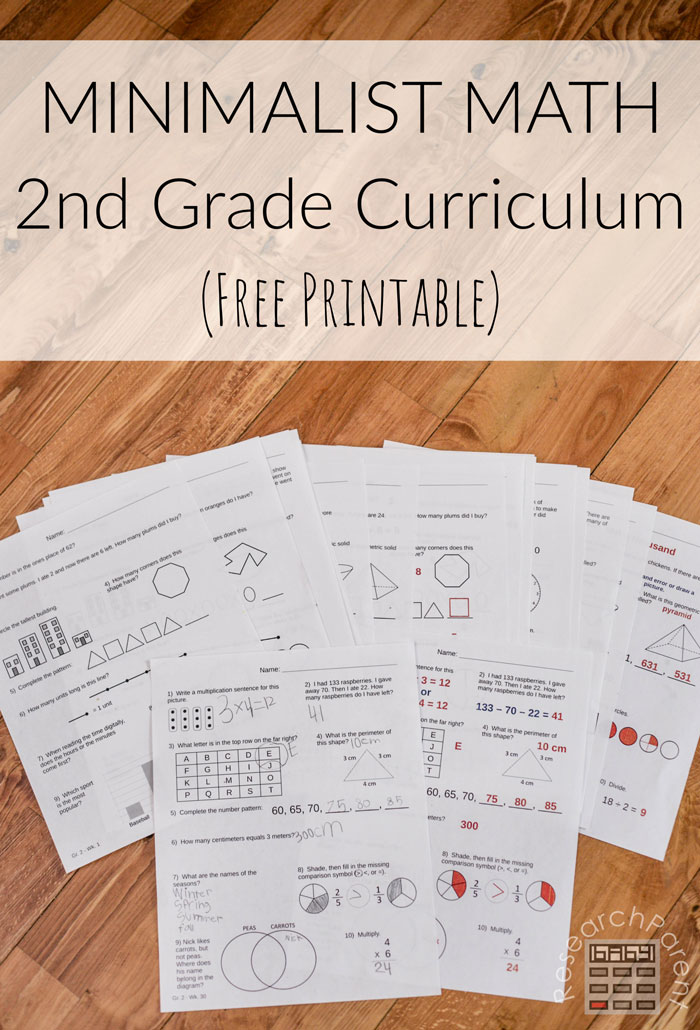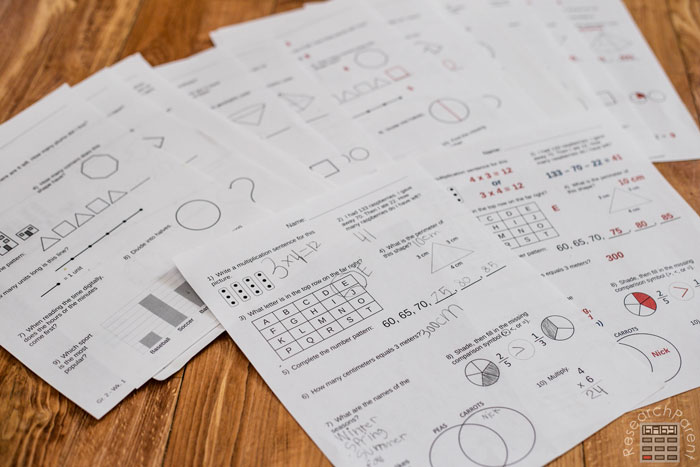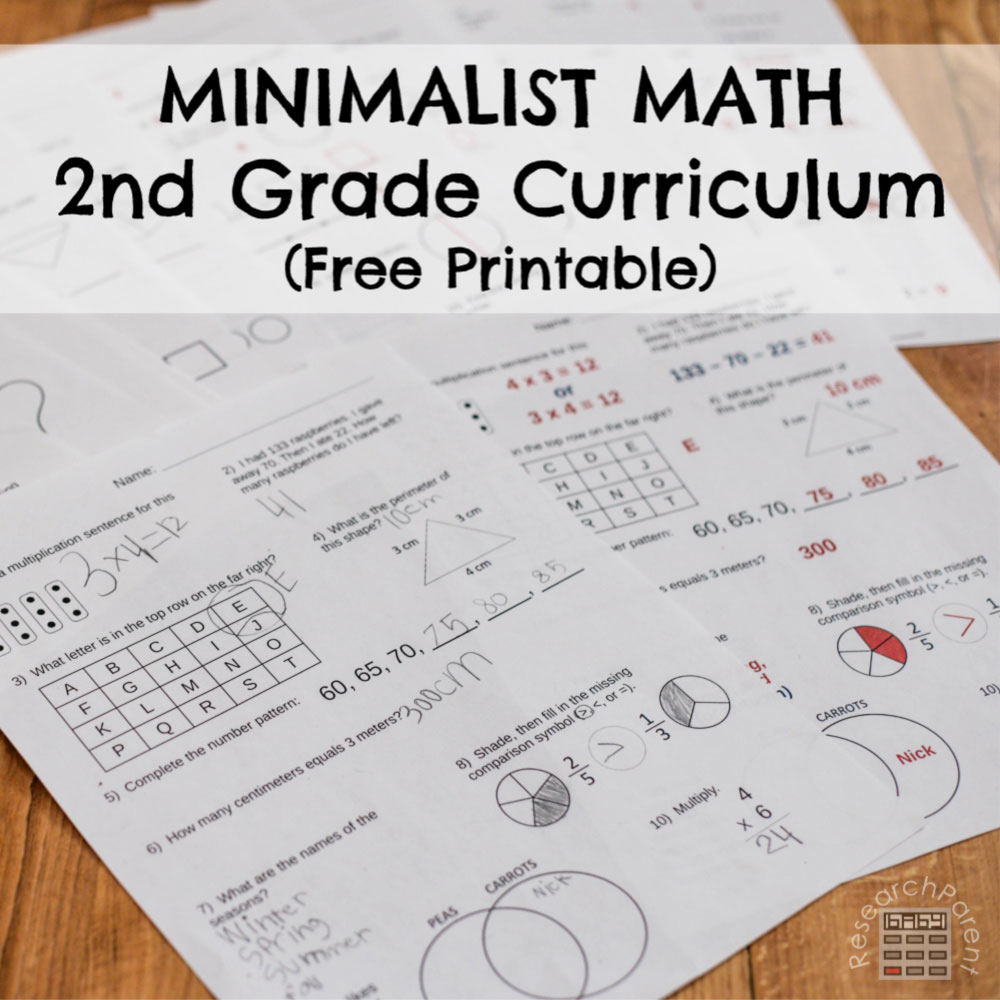I want my kids to be open-minded about math. Personally, I love math. I love solving puzzles and figuring out challenging problems. Unfortunately, I feel like all the repetition that kids experience in elementary school has the potential to squash a child’s love of math. No one wants to do the same type of problem 20 times. What matters to me is that my kids understand the concepts well enough to reason their way through a problem even if they have never seen it before. Since the repetition found in traditional math curricula felt excessive and overwhelming to me and my kids, I decided to create my own.

Basically, I created 36 worksheets for my kids, one for each week of school. Each worksheet has 10 problems from 10 different areas of math. The problems get progressively more difficult as the year goes on. Therefore, rather than do math every single day, my kids do 10 problems once a week. I created these problems after taking notes on a various second grade curricula to be sure that I was covering the same variety of problems that a child would see using a more traditional approach. You can learn more about my methodology here.
Because we don’t have formal math lessons and they will not be repeating the same problems over and over, kids will likely need help completing these worksheets. I recommend sitting next to the child for the 20 or so minutes per week it takes to complete these worksheets. Your presence and gentle assistance will reduce frustration and make kids more willing to attempt unfamiliar problems.
It is my belief that if kids can master the 360 problems in this curriculum, they will be at least as well off as if they had completed the thousands of problems in a traditional curriculum. So far, all of my children test at or above grade level in math even though they spend far less time on math than their peers.

This second grade minimalist math curriculum covers the following 10 topics. Each week a child does one problem from each of these categories.
- Understanding Numbers
- Word Problems
- Spatial Sense
- Geometry
- Patterns & Sequences
- Units & Measurement
- Telling Time
- Fractions
- Graphs, Charts, and Tables
- Calculations
Be aware, one potential problem with not having the repeated exposure found in traditional curricula is that kids may be a little slower at basic math facts. For example, when my son was in third grade, he had good accuracy and he was open minded about tackling difficult problems, but it took him a minute to add single digits like 7 plus 8. Personally, I feel that this can be remedied when kids are older. However, if speed is a concern, I recommend supplementing this curricula with Kate Snow’s Math Facts that Stick series.
You are also welcome to check out this site’s free addition and subtraction resources to give kids extra practice. Another way to improve kids’ speed is through math games. Our family likes Clumsy Thief (for adding to 100) and Clumsy Thief in the Candy Shop (for adding to 20).
Recommended Age Range: Second Grade
Time Required: about 20 minutes per week
Difficulty: starts off fairly easy and gets harder as weeks progress
Cost: Free printable
Materials
paper
Instructions
Print out the curriculum and help your child complete one worksheet each week for each of the 36 weeks of school.
Free Printable
Minimalist Math – Second Grade Curriculum
Minimalist Math – Second Grade Curriculum – Answer Key

Click here for all the Minimalist Math curricula available for different grade levels.
Related Links
Math Activities for Kids
Minimalist Math Curriculum Methodology
Learning Activities for Kids
The post Second Grade Minimalist Math Curriculum appeared first on ResearchParent.com.

